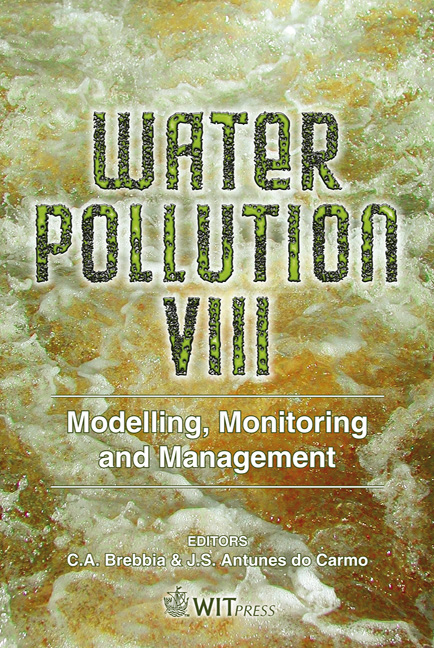A Study Of Anthropogenic, Marine And Other Influences Upon Water Chemistry In Hong Kong Rivers
Price
Free (open access)
Transaction
Volume
95
Pages
10
Published
2006
Size
430 kb
Paper DOI
10.2495/WP060091
Copyright
WIT Press
Author(s)
G. W. S. Wong & M. R. Peart
Abstract
A six-year river data water quality set obtained by the Hong Kong Environmental Protection Department (HKEPD) at 82 monitoring sites are used to study, at the regional scale, the spatial controls and influences upon water chemistry in HK rivers. Univariate statistics and factor analysis of the elements have been applied to analyze 27 determinands of surface water quality (pH, water temperature (Temp), flow, Salinity (Sal), Total Solids (TS), Conductivity (COND), Cl, TOC, BOD5, COD, DOmg/L, DO%, NH4, NO2, NO3, TKN, TP, PO4, Al, Fe, Zn, Mn, Pb, Cd, Cr, Cu, Ni). The statistical results show that nutrients, aggregate organics and metals have greater variation than physical parameters which are less influenced by anthropogenic factors. These determinands can also be explained by four principle factors, representing nutrient and organic contamination, marine influences and heavy metal contamination. Finally, the local rivers can be classified into four groups, based on the factor scores derived from the factor analysis. These results may contribute to the improvement of landuse planning and sewerage design in the future. Keywords: river-water chemistry; marine influence, nutrient and heavy metal contamination. 1 Introduction It is well recognized that the water-quality determinands in rivers can reflect many factors and processes functioning in the drainage basins and catchment systems, such as atmospheric deposition, soil erosion, weathering of crustal minerals, biomass characteristics and anthropogenic inputs (Berner and Berner
Keywords
river-water chemistry; marine influence, nutrient and heavy metal contamination.





